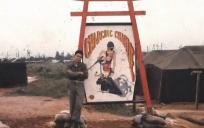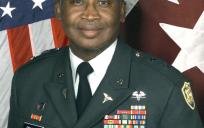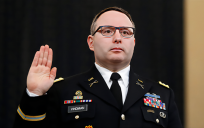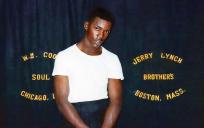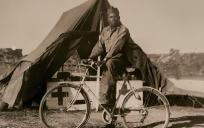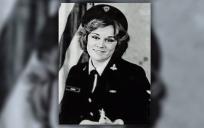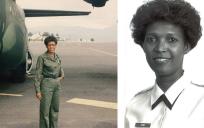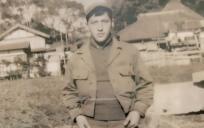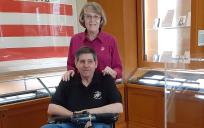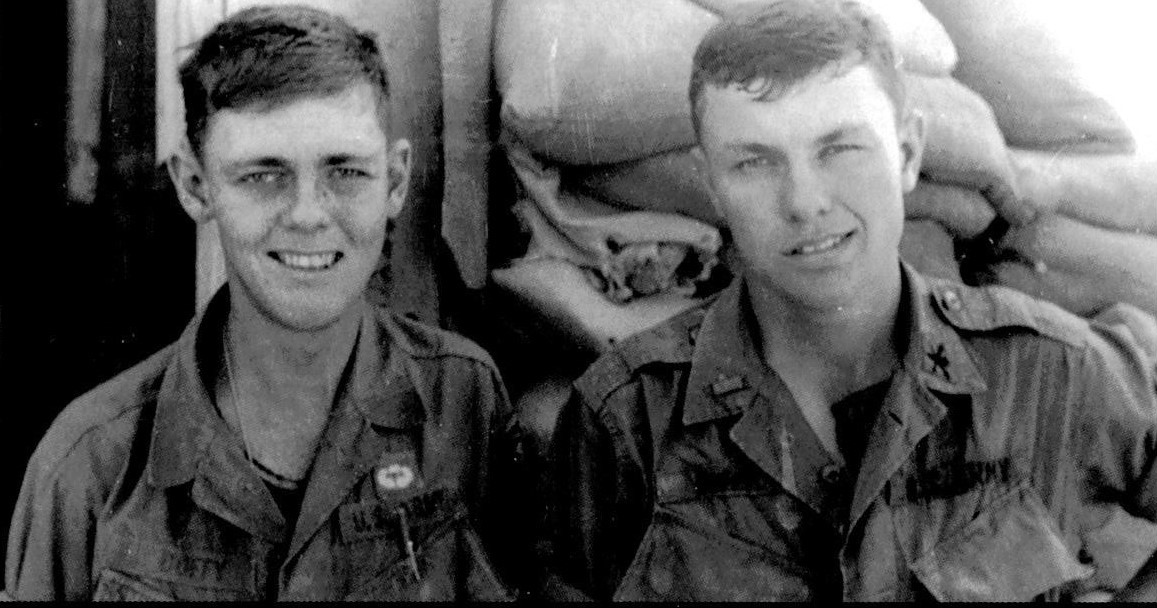Record date:
Second Lieutenant Michael Duffy
Landing in Saigon’s Tan Son Nhut Airport when it was under attack during the Tet Offensive was a trial-by-fire introduction to South Vietnam for Artillery Officer Second Lieutenant Michael Duffy.
Duffy was born in Chicago and grew up with his brother in Rogers Park, a neighborhood in far north Chicago. While not an inspired student he was talented in math and geometry. After graduation from high school Duffy began work in the Chicago railway yards and at the age of nineteen, he received his draft notice. After thinking things over he decided to speak to an Army recruiter. The recruiter gave him a series of tests, he qualified to train as a surveyor in the US Army.
Duffy entered active duty on March 14, 1966. He was sent to Fort Polk, Louisiana for his basic training after that to Fort Sill, Oklahoma for Artillery Survey School. A natural fit for the Army, he was invited to OCS [Officer Candidate School], which he attended at Fort Sill for six months, lured in part by better pay. On March 14, 1967, he was commissioned a second lieutenant in the Field Artillery. After graduation from OCS, he was sent to Fort Carson, Colorado where he worked as a forward observer in multiple field exercises. In December of 1967, he was sent to Panama for jungle training, and after that dispatched to Vietnam.
Duffy explains that the traditional role of artillery is to stay behind the infantry and support them with fire when they are under attack. The impact zone of artillery is critical since dropping artillery near the front lines risks friendly fire. However, when the infantry moved beyond the seven-mile limit of the 105mm howitzers, his artillery unit moved along with them in order to cover them. Duffy soon was promoted to OIC [Officer in Charge] of FCD [fire direction control] a role that required much care. “When the infantry radioed enemy coordinates these coordinates were plotted on a map and a large chart table where a push pin was inserted to signify the target. A long straight edge was moved to give distance and deflection to the target. This procedure was pre-computer. They determined artillery tube elevation using slide rules. The elevation and deflection figures were plotted and then checked twice before calling them down to the guns.” Duffy quotes his mentor First Lieutenant Jack Brocker;
“We can’t afford to make an error.” Sadly, Duffy references a tragic error that did occur when a subordinate lieutenant relieved him and did not follow orders.
As an executive officer, Duffy was unfazed by handling disciplinary issues, mediating between soldiers, or reminding older officers under his command to double-check their computations. But he was disheartened by those who would not do the right thing such as the “medal riders” who refused to step out of a helicopter to help carry a wounded man from a battlefield.
Duffy’s first assignment in Vietnam was at Bearcat, the home base of the 7th Battalion 9th Artillery. Duffy was assigned to run convoys of artillery ammunition out to one of the three battalion artillery batteries located in the field. After a few months, he was assigned to Battery C, 7th Battalion 9th Artillery located at Xuân Lộc. His battery moved from there to the Bình SơnRubber Plantation then onto Nhà Bèseven miles south of Saigon. In Nhà Bè he collaborated with the South Vietnamese army’s artillery. There he also worked with the local population and was given the responsibility of paying the base’s civilian workers.
Near the end of Duffy’s one-year tour in Vietnam Duffy was called to the commanding offer’s office and was offered captain’s bars. He refused the captain’s bars so that he could leave the Army and attend Colorado College. Arriving home on Christmas Eve he felt awkward as a civilian and in a small way he missed the Army and the men with whom he served. His studies in college occupied his attention but soon he felt the shadows of Vietnam seeping back into his head. Still, like many Vietnam Veterans returning to a hostile United States, he “took his uniform off and kept his mouth shut.” Many of his friends in Chicago did not know how to broach the topic of war with him.
Without words, his first “storytelling” was relayed through paintings. It was a personal affair, and he simply stored his Vietnam paintings in his basement. In the late 1970s he learned about N.A.M.E. Gallery in Chicago, the first gallery to present exhibits from the works of Vietnam War artists, that group of artists soon became a home to him.
His career took him to TV set design, graphic arts, and business. Duffy married and raised a family. In the year 2016, Duffy published his memoir, From Chicago to Vietnam: a Memoir of War, a thirty-year project. In his interview, he also reflects on several other topics such as the American experience of fear during the Cold War, the public’s treatment of the Vietnam veterans, and the personal benefit he derived from the US Army as an organization.
